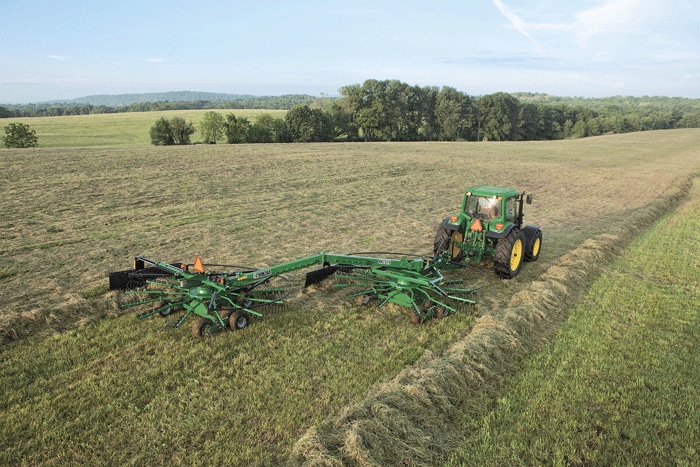September 4, 2015

Producers know high-quality forage can reduce feed costs. But getting high-quality hay cured in a timely manner in the Southeast can be difficult. Weather can ruin good plans.
Steve Morgan, University of Georgia Extension coordinator in Harris County, in his article “Harvesting and Curing High Quality Hay” gives some good tips on the best ways to ensure hay is cured properly and timely and meets the nutritional needs of cattle.
The five following management practices will help dry hay as quickly as possible:
Take advantage of good drying conditions. Even if the weather forecast projects good drying conditions in the 7-day forecast, the chances are fairly high of afternoon showers. If the decision is made to harvest, begin cutting the crop immediately before or soon after the dew is off. By waiting to the end of the day to cut, the drying time is pushed back by a full day or more. This exposes the curing hay to more risk of weather-damage.
Use a conditioner. A successful harvest of high quality forage starts with the proper use and set-up of the mower-conditioner. A key factor in achieving a high quality harvest is productivity – getting the crop cut and off the field as fast as possible to avoid weather damage. The conditioning system on the mower-conditioner is intended to crack, strip or split the plant stem. This reduces the period of time the crop is on the ground and exposed to damage from rain. Studies have shown that the drying rate of a hay crop is 15-25% better when a conditioner is used. There are two basic types of conditioners: impeller (sometimes called flail) and roller-crimper. The impeller conditioner uses v-shaped flails that whip around on a rotating drum. The flails in a impeller-type mower conditioner are not knives. They do not cut the hay; they are designed to strip some of the waxy coating off the hay to allow faster drying. The intermeshing rubber rolls of a roller crimper conditioner crush the stems and leaves of the forage crop. Crimping and crushing newly cut hay promotes faster and more even drying.
Use the right conditioner. Flail mowers are generally better for bermudagrass and tall fescue. Roller-crimper conditioners are better for thick stemmed species like pearl millet or sorghum x sudan grass hybrids and legumes like alfalfa and clover. Avoid the use of a flail mower on leaf crops. This will help prevent leaf losses during the harvesting process.
Spread the windrow out wide. The hay producer’s best friend is sunshine. Sunlight speeds up drying. Therefore, it is important to spread the windrow out wide to get equal drying time on the entire crop. For alfalfa and other legumes, (leaf crops) however, wheel traffic over top of the swath may increase leaf losses. In this case, it may be best to lay the forage in a narrow swath at first, and then use a tedder to spread the forage out.
Use a hay tedder. A hay tedder inverts, stirs, and spreads out the hay crop. It is used after cutting and before windrowing, and uses moving forks to aerate the hay thus speeding up the process of hay-making. The use of a tedder allows the hay to dry ("cure") better. The proper use of a hay tedder can substantially increase the drying rate of a hay crop (by 15-30%). Tedder hay on the morning after the crop was cut. However, if large clumps of forage pile up behind the cutter, it may be necessary to tedder the hay shortly after mowing. It is usually best to complete all tedding operations before late morning because running the tedder after the dew has completely dried or when the forage is too dry can lead to excessive leaf shatter and losses.
About the Author(s)
You May Also Like






